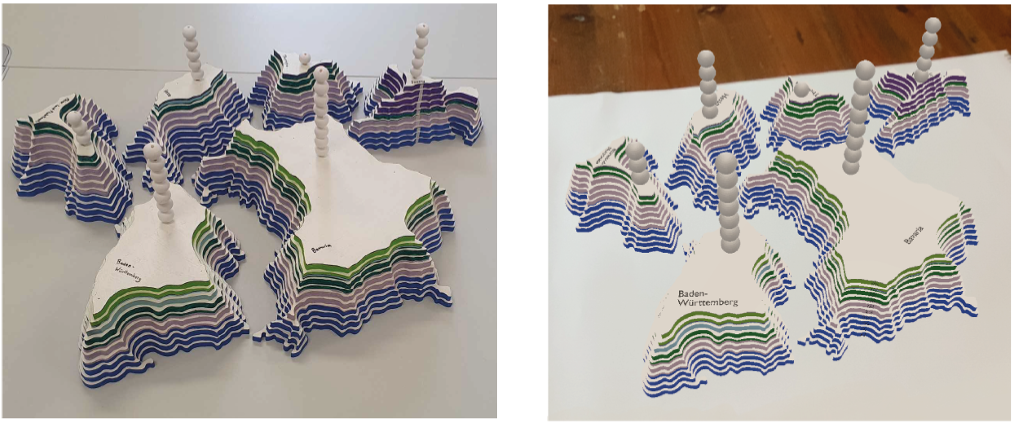AR versus Physical Data Representations
A Comparison of User Engagement and Spatial Exploration Patterns

Immersive visualisations, that enable spatial, embodied exploration (e.g., XR and physicalisations), have the potential to increase user engagement with data representations. However, which mode of representation offers a higher engagement, and how does the user experience differ? Our work compares a physicalisation to a mobile AR representation of energy consumption sources and CO2 emissions. In a counter-balanced study with 16 participants, we found no significant differences in perceived user engagement, except for higher scores in “perceived usability”. The physicalisation was considered ‘real’ and intuitive, the AR representation technical and precise. Most participants preferred the physicalisation and felt more ‘connected’ with it. We also analysed patterns of how people moved around the representations, and found no differences between conditions. Despite people being able to touch the physicalisation, this was barely made use of—thereby turning both conditions into visual exploration. We discuss what rationale participants provided for barely touching and discuss implications.
TEI'24 Full Paper
- Citation: Mira Thieme, Rosa van Koningsbruggen, Dominic Potts, and Eva Hornecker. 2025. AR versus Physical Data Representations: A Comparison of User Engagement and Spatial Exploration Patterns. In Nineteenth International Conference on Tangible, Embedded, and Embodied Interaction (TEI ’25), March 04–07, 2025, Bordeaux / Talence, France. ACM, New York, NY, USA, 16 pages. https://doi.org/10.1145/3689050.3704946 View Paper